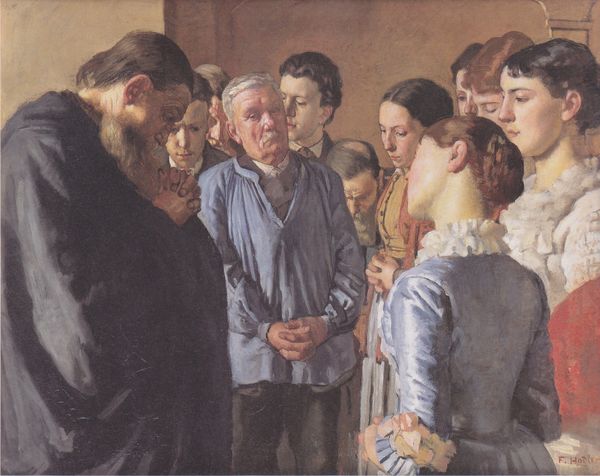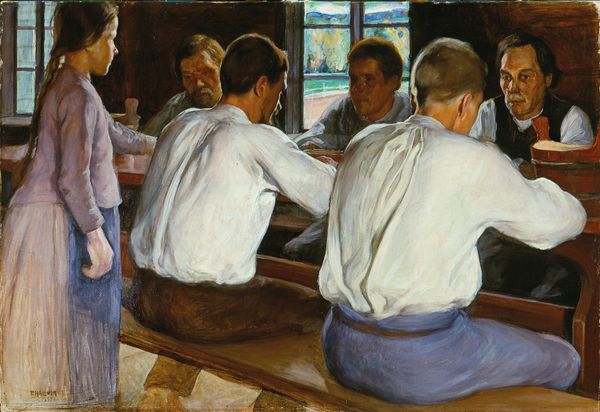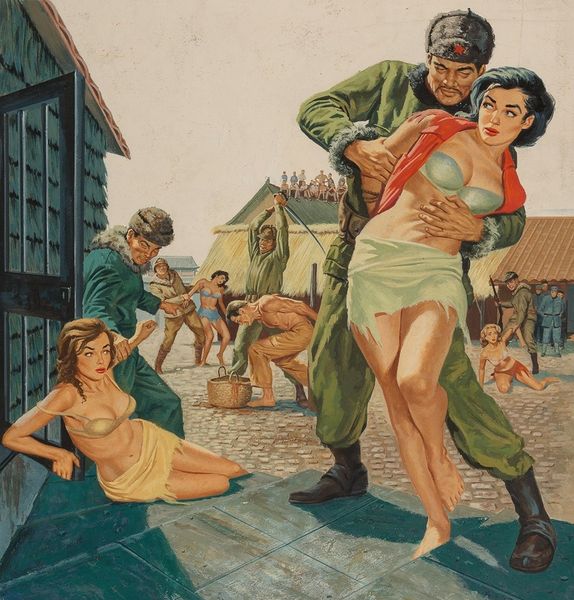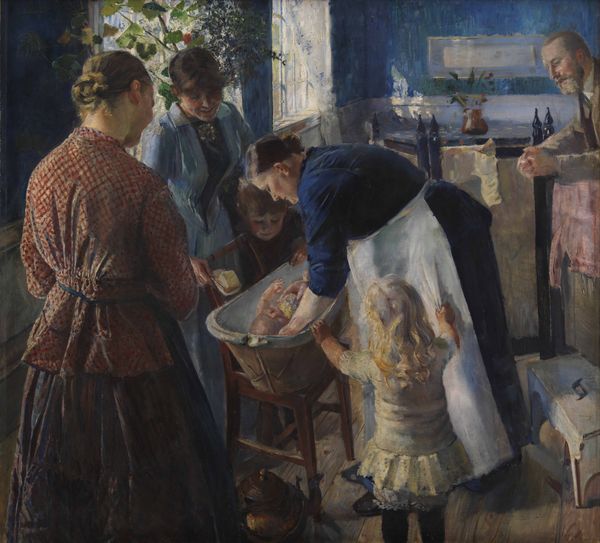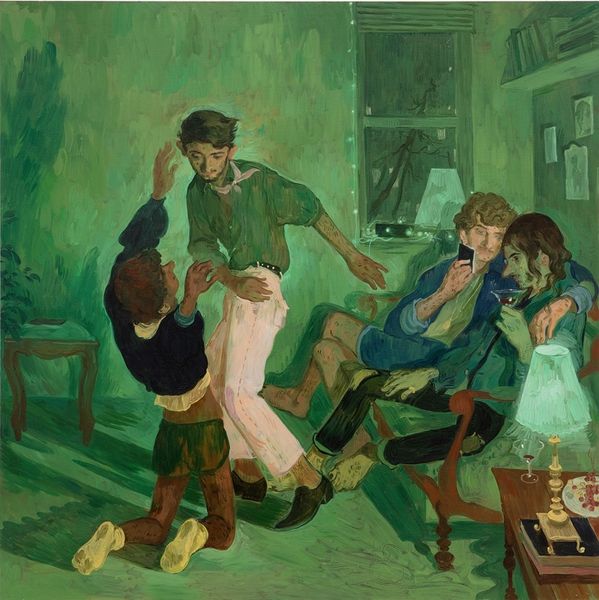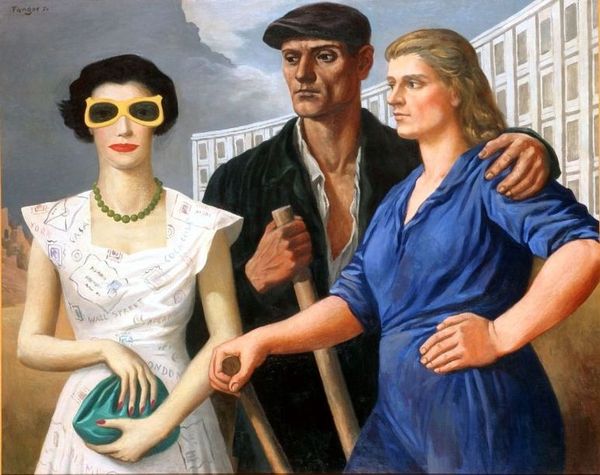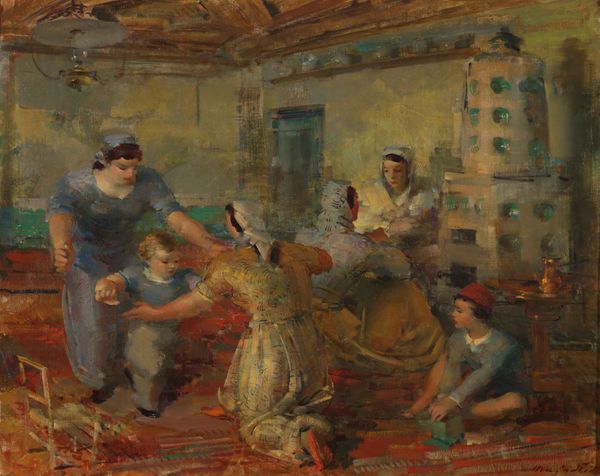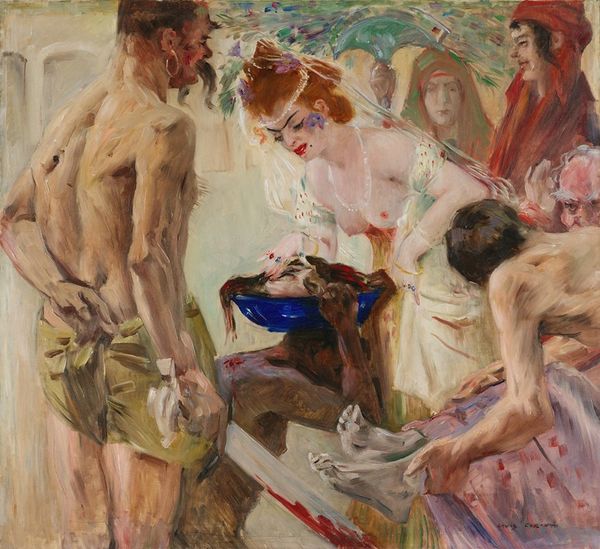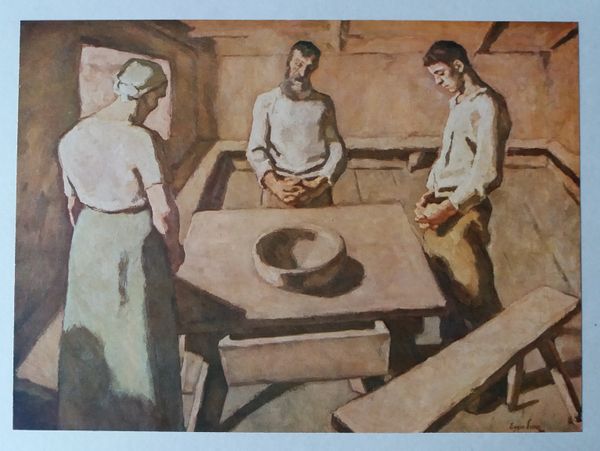
painting, oil-paint
#
portrait
#
narrative-art
#
painting
#
oil-paint
#
figuration
#
social-realism
#
group-portraits
#
history-painting
#
realism
Copyright: Dmitri Zhilinsky,Fair Use
Curator: Welcome to this gallery. Here we find Dmitri Zhilinsky’s “In the Memory for Fallen,” created in 1959 using oil paint. Editor: Immediately, a feeling of subdued grief strikes me. The composition, predominantly vertical, with figures standing in a row facing away creates an organized display, almost staged solemnity. The muted color palette reinforces this somber mood. Curator: The artist has employed realism, portraying each individual with distinct features, though clearly leaning towards a type of Social Realism in both theme and tone. Editor: Precisely, Social Realism—with its focus on communal experience and clear messaging. The positioning of this diverse group before what appears to be a memorial hints at collective loss. One wonders about the power dynamics inherent in depicting this kind of sanctioned mourning. Are the individual emotions of these figures truly represented, or is this grief rendered into a state narrative? Curator: The strength of this work rests on the artist’s technical skill, specifically his understanding of light and shadow. Consider how light drapes across the figures and tombstone creating a balanced whole and providing structure for your eye to dance across each component. Editor: However, one must also address the undercurrent of the personal stories intertwined within these group-oriented Social Realist portraits. What wars, persecutions, and traumas unite these people? Also the artist's choice to exclude the audience from clearly knowing the scene seems strategic. Curator: I concede there are historical gaps which the artwork subtly acknowledges. But the beauty of the work is on how a very serious political painting carries on artistic movements preceding its conception as evidenced by a highly nuanced palette. Editor: A valuable nuance, to be sure, however those shadows of what we do not see only raise vital questions. It seems what the figures and their past refuse to relinquish and disclose becomes more fascinating. Curator: An intriguing conclusion! On our journey toward decoding its structure, we uncovered something deeper which seems the most enduring takeaway. Editor: An observation which illuminates why artworks continue to remain relevant and challenging across generations.
Comments
No comments
Be the first to comment and join the conversation on the ultimate creative platform.
